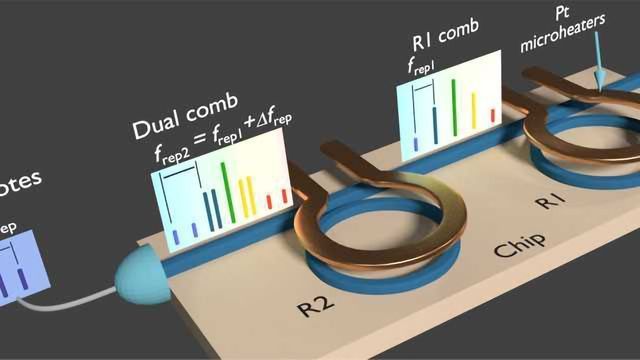Dual-frequency coherent anti-Stokes Raman scattering (CARS) is a highly useful technique used in various fields such as biology, chemistry, and materials science. This technique allows for real-time imaging of biological and chemical processes with high spatial and temporal resolution. However, the development of an excitation source with two independent-tunable Stokes wavelengths has been a challenge.

Recently, a team of researchers has successfully demonstrated an excitation source with two independent-tunable Stokes wavelengths using photonic crystal fibers (PM-PCF) and vector adjustment. This breakthrough will enable the advancement of dual-frequency CARS in various research fields.
PM-PCF is an optical fiber with a periodic array of airholes that runs along the length of its core. By adjusting the structure of the fiber, it is possible to manipulate the dispersion of the light propagating through it. The vector adjustment used in this study refers to the adjustment of the polarization state of the light to control the pump and Stokes beams' wavelengths.
The researchers used a polarization-maintaining PM-PCF to generate two independent-tunable Stokes wavelengths. By adjusting the polarization state of the input pump beam, they could control the differential group delay between the two Stokes beams, resulting in independent tuning of the two Stokes wavelengths. Furthermore, the use of vector adjustment enabled the fine-tuning of the pump and Stokes beams' wavelengths, allowing for precise control of the excitation source's output.
This excitation source's development is significant as it will enable researchers to conduct dual-frequency CARS imaging with high spatial and temporal resolution. Additionally, the development of an excitation source with two independent-tunable Stokes wavelengths is critical to overcoming the limitations of conventional dual-frequency CARS techniques, which require complex and expensive laser systems.
The dual-frequency CARS imaging technique has various applications, including the study of chemical reactions, the imaging of cells and tissues, and the analysis of micro- and nano-scale materials. The ability to conduct dual-frequency CARS imaging with high spatial and temporal resolution will significantly advance these fields' research.
Furthermore, the dual-frequency CARS imaging technique's development has applications in the security and surveillance industries. The integration of this exciting technology with 2.4g/5G Dual Frequency Camera will enable real-time imaging of various security threats, including explosives and hazardous materials.
In conclusion, the development of an excitation source with two independent-tunable Stokes wavelengths using PM-PCF and vector adjustment technology is significant. This breakthrough will enable the advancement of dual-frequency CARS in various research fields, including biology, chemistry, and material science. Additionally, the integration of this technology with 2.4g/5G Dual Frequency Camera has applications in the security and surveillance industries.